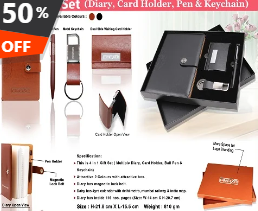New Year Diary Manufacturers in Bangalore

Contact : +919513322217
Manufacturing of New Year Diaries
The production of New Year diaries is an intricate and creative process that blends design, functionality, and craftsmanship. As the demand for personalized and stylish diaries increases each year, manufacturers need to pay close attention to various aspects of the production process, from conceptualization to final delivery. This 500-word guide explores the key elements of manufacturing New Year diaries, highlighting the various stages involved and factors that influence the final product.
1. Design and Conceptualization
The first step in manufacturing a New Year diary begins with its design and conceptualization. This phase involves identifying the target market and creating a design that will appeal to consumers. Manufacturers may offer a variety of themes such as minimalistic, corporate, festive, or artistic. The design process typically includes choosing the layout, color scheme, fonts, and any special elements like calendar features, inspirational quotes, or motivational sections.
For corporate clients, the design may incorporate the company’s logo and branding, while for personal buyers, customization options such as name embossing or adding personal dates might be offered. The cover material (such as leather, fabric, or eco-friendly options) is also chosen during this phase, taking into account durability, aesthetics, and cost-effectiveness.
2. Material Selection
Material selection plays a crucial role in determining the quality and feel of the diary. High-quality paper is essential for ensuring that the diary can handle various types of writing instruments, such as pens, markers, and pencils, without bleeding through. Most manufacturers choose acid-free, smooth-textured paper for a premium finish.
The cover materials can vary widely, from hardcovers with leather or faux leather to softcovers made from fabric or recycled materials. The choice of binding is equally important, as it affects the usability of the diary. Common binding methods include spiral, case-bound, or thread-sewn, with the option of adding a ribbon marker, elastic closure, and pockets for convenience.
3. Printing and Embellishment
Once the design is finalized and materials are selected, the printing process begins. For diaries with custom branding or artwork, digital or offset printing techniques are used to ensure crisp, vibrant images. Special printing techniques, such as embossing, foil stamping, or UV coating, can add a luxurious touch, particularly for the diary cover. These techniques enhance the visual appeal and provide a tactile experience.
In addition to the cover, the interior pages are also printed, which often involves a mix of text and graphics, such as the calendar layout, sections for notes, and motivational quotes. Manufacturers can include personalized content based on customer preferences, adding value to the product.
4. Binding and Assembly
Once the components are printed, the binding process begins. The pages are assembled, and the cover is attached using the chosen binding method. This phase is crucial for ensuring the durability and smooth operation of the diary throughout the year. The binding must allow the diary to open fully, making it easier for users to write comfortably.
After binding, additional elements such as bookmarks, elastic bands, and pockets are attached. Some diaries may also feature extras like a pen loop, a calendar, or special sections for keeping track of important events or goals.
5. Quality Control and Packaging
After the diaries are assembled, they undergo a rigorous quality control process. The quality check ensures that the paper is free of defects, the binding is secure, and the design aligns with the initial concept. Any errors or imperfections are identified and corrected before the final product is packaged.
Packaging plays a vital role in protecting the diary during transit and making it presentable for sale. Diaries are typically packed in attractive boxes or wrapped in protective plastic to prevent damage. For premium diaries, manufacturers may also offer customized packaging options to elevate the gift-giving experience.
Conclusion
The manufacturing of New Year diaries is a well-coordinated process that requires attention to detail at every step. From design and material selection to printing, binding, and packaging, every stage plays a role in ensuring that the final product meets the expectations of the customer. Whether it is for personal use, corporate gifting, or as a festive item, a well-crafted New Year diary offers functionality and style, helping individuals stay organized while adding a personal touch to their daily routine.
